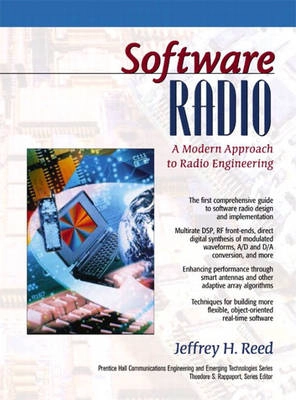Preface.
Acknowledgments.
1. Introduction to Software Radio Concepts.
The Need for Software Radios. What Is a Software Radio? Characteristics and Benefits of a Software Radio. Design Principles of a Software Radio. Questions.
2. Radio Frequency Implementation Issues.
The Purpose of the RF Front-End. Dynamic Range: The Principal Challenge of Receiver Design. RF Receiver Front-End Topologies. Enhanced Flexibility of the RF Chain with Software Radios. Importance of the Components to Overall Performance. Transmitter Architectures and Their Issues. Noise and Distortion in the RF Chain. ADC and DAC Distortion.
3. Multirate Signal Processing.
Introduction. Sample Rate Conversion Principles. Polyshase Filters. Digital Filter Banks. Timing Recovery in Digital Receivers Using Multirate Digital Filters.
4. Digital Generation of Signals.
Introduction. Comparison of Direct Digital Synthesis with Analog Signal Synthesis. Approaches to Direct Digital Synthesis. Analysis of Spurious Signals. Spurious Components due to Periodic Jitter. Bandpass Signal Generation. Performance of Direct Digital Synthesis Systems. Hybrid DDS-PLL Systems. Applications of direct Digital Synthesis. Generation of Random Sequences. ROM Compression Techniques.
5. Analog to Digital and Digital to Analog Conversion.
6. Smart Antennas.
7. Digital Hardware Choices.
8. Object-Oriented Representation of Radios and Network Resources.
9. Case Studies In Software Radio Design.
Appendix A. Rf Engineering Books And Trade Publications.
Appendix B. The Coordinate Rotation Digital Computer Algorithm.
References.
Glossary of Acronyms.
About the Author.
About the Chapter Co-Authors.
Index.
Åtkomstkoder och digitalt tilläggsmaterial garanteras inte med begagnade böcker





















